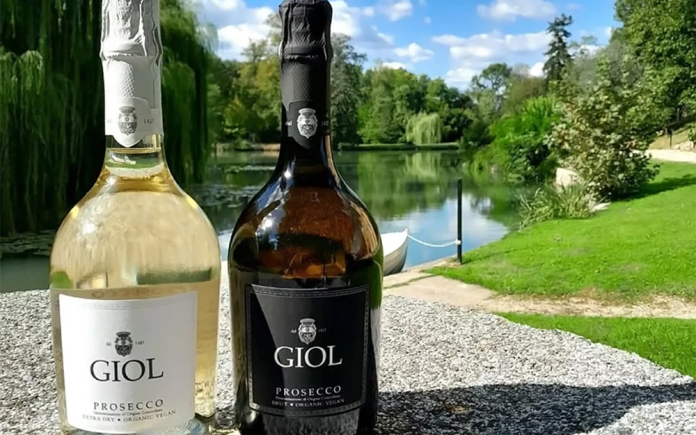
By Rick Riozza
We wine enthusiasts surely delight in a lot of collateral benefits simply by enjoying wine itself.
For instance: I went overseas to attend the oldest and largest wine trade event that is held annually in Verona Italy: VinItaly. New and old vintage wine from every part of Italy is poured & sampled. It is organized for business and also opened to the public; it runs for almost an entire week. Definitely a destination for vino lovers traveling around Verona in April.
Being a part of media, I was privileged to attend a private wine tasting. It began with a “blind” wine tasting, where three glasses were presented for each attendee at the table—without any indication of what, where, when, or who the wine was all about. We tasted and then offered our opinions. (the “where” of course would be Italy—but where in Italy was the question!).
As one would expect, the entire tasting was conducted in Italian. I sat with a few Americans, whose fluency in Italian was much worse than mine; thus I played the One-Eyed King in the land of the blind! But everyone’s Italian improves after a couple glasses of wine—allora!
After sampling a few glasses, all the guessing about the wine was happily concluded and the representatives from the winery spoke. We were told that we were indeed tasting the same type and style of wine that was enjoyed by one of the most famous person in history: Cristoforo Colombo—in English, that would be Christopher Columbus, who was born in Genoa in 1451 and sailed the ocean blue to America!
In 1427, following the conquest of the mainland, the Venetian Republic Doge awarded its commander-in-chief Nicolo Mauruzzi da Talention, San Polo di Piave—which included a small castle and farm. And like any proud Italian, he planted vineyards and built a winery on the land.
After three hundred years, the property and ownership went here, there, and everywhere from Napoleon’s shenanigans onto similar plight from the Emperor of Austria. During the first world war, the castle and the winery became a military garrison and the setting of the Battle of Caporetto—when evidence of the battle is still visible on the walls and barrels today.
In 1919 the whole complex was purchased by Giovanni Giol—who previously built the largest winery in the world in Mendoza, Argentina. Today his great-granddaughter Luisa and her son Vittorio continue to manage the environmental heritage of the land.
The old winery is a highly evocative place: seemingly untouched by the passage of time, it is a strikingly impressive building, set against a backdrop of age-old wisteria and lime trees alongside a gurgling spring. Viewed from the outside, it is a large two-story building with impressive stone walls and a main facade featuring an entrance and ornately decorated window surrounds in local stone; the other two sides are characterized by river pebbles alternated with handmade bricks.
Known as the “Great Cellar” one of the largest wine cellars in Italy, it provides the ideal environment for aging fine wines as it is protected by walls over a meter thick.
The ground floor features one of the most impressive and striking barrel ceilings found anywhere in northern Italy. The cellar houses 78 barrels of different sizes (the largest holding an incredible 26,000 liters) protected by more than 220 closely spaced beams that support the vast granary above. Upstairs, one can appreciate the remarkable dimensions of this huge open space:78 metres long and 18 metres wide.
During the First World War, whole wheels of cheese were hidden inside the barrels to prevent them being confiscated by the occupying forces, which explains the origin of a local cheese known as ubriaco, or ‘drunken cheese’.
For the last 40 years, the winery has organized under organic farming methods, and the winery touts, “we have produced no added sulphites wines. Fine wines, like ours, are better when they are produced without the use of sulphites because they have a more authentic aroma, are more appealing in the mouth and are easier to digest. The taste follows a natural aging of the flavors, without added substances that alter the sensory experience. This is why we believe in authenticity.”
The winery currently produces Prosecco, Pinot Grigio, Chardonnay, Verduzzo, Merlot, Cabernet, Raboso, and Bronner.
One of our favorites at the tasting was the Giol Prosecco, ($28) a Gold Medal winner at the Millesme Bio competition. “Pale straw yellow sparkling wine with greenish highlights and a fine persistent bead. Pronounced fruity nose of white fleshed fruit, apples and peaches, and floral notes of wisteria and acacia blossom, completed by hints of crusty bread and yeast. On the palate it is well balanced and delicately dry, characterized by a pleasant acidulous flavor and good structure. Excellent as an aperitif and for toasts, and a good accompaniment to fine biscuits. It also goes well with vegetable and light fish hors doeuvres, soups and starters, pasta and risottos.”
Fortunately for us locals, this wine and others, can be purchased online from the The Organic Cellar in Lauguna Beach (949) 306.5474. Brian Cuddy is the owner—please tell him or his staff Ciao! for me.
One of the other wines we tasted was the Verduzzo. A variety that enjoyed notable fame way back in the past—perhaps it was Columbus’ favorite? and has now been almost completely abandoned. In some places it is known as “Verdicchio”.
The winery said, “We are one of the very few producers who continue to cultivate this grape. We use it to produce a pure varietal wine, that is slim-bodied and slightly tannic, with a delicate fruity peach aroma that is reminiscent of springtime. The perfect accompaniment to spring dishes and pizzas, it is delicious with desserts and can also be enjoyed alone. Serve at 10-12 °C. This is a fine addition to our collection of traditional wines.”
Saluti!!










































